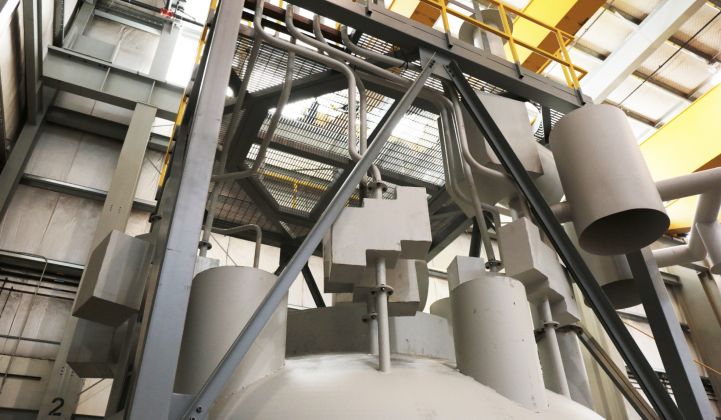Last month’s first-ever small modular reactor design approval could usher in a new era for nuclear power, provided the technology can live up to the hype.
The U.S. Nuclear Regulatory Commission (NRC) phase 1 review approval of a small nuclear reactor (SMR) design from Portland, Oregon-based NuScale Power means the technology now has a realistic chance of being up and running within a decade.
In a press release, NuScale said its first operational products, for Utah Associated Municipal Power Systems (UAMPS), could be hooked up to the grid “by the mid-2020s,” while Bloomberg reported that the company was aiming for commercial operations in 2026.
The reactor developer next has to get NRC design certification application approval and customer UAMPS needs a combined construction and operating license, NuScale’s director of communications, Mariam Nabizad, told GTM.
But Josh Freed, founder and leader of the clean energy program at center-left think tank Third Way, said NuScale has already changed the global SMR picture.
“Advanced nuclear had always been discussed in the context of being 10 years away from licensing,” he said. “Throughout the 1990s and early part of this century, it never got to that point."
“NuScale marks a significant change because they are building components, testing pieces of the new reactor and are engaged with the NRC in a very methodical process that is moving forward," said Freed. "They’ve got a site selected and a partner in UAMPS. This is a project that is tangible.”
When it goes live, the UAMPS plant could be the definitive test of whether nuclear has a future in many Western economies. In Europe and the U.S. the industry is on the wane, mounting a rearguard PR campaign to claw back fans and betting heavily on SMRs to regain credibility.
That means the UAMPS project, which is set to have a dozen 50-megawatt NuScale SMR modules, will have to buck recent nuclear new-build trends by coming in on time and on budget.
And, critically, it will have to be competitive with other generation sources being built eight years from now. Nabizad said that the estimated overnight cost for the UAMPS project was $2.9 billion, and its target levelized cost of energy was $65 per megawatt-hour.
For comparison, the International Renewable Energy Agency predicts that by 2020, more than half a decade ahead of the UAMPS project going live, onshore wind will be hitting an LCOE of $50 per megawatt-hour and solar will be at $60 per megawatt-hour.
Naturally, NuScale should be able to point to the fact that SMRs do not suffer from intermittency as a reason for paying a premium for nuclear energy.
The NuScale design, unlike traditional reactors, is also supposed to be capable of a certain amount of load-following, which could help it compete with gas plants.
The problem is that neither of these arguments is much of a deal-clincher at the moment, and it is unclear if they will be in eight years’ time.
Gas is beating nuclear not because of its load-following abilities, but because markets, particularly in the U.S., are not set up to fully reward the high-volume carbon emission reductions that reactors can deliver.
And with wind- or solar-tied storage plummeting in cost, it is unclear to what extent intermittency will be an issue for intermittent renewables eight years from now. All these factors could fuel concerns that SMRs may never be a viable technology.
Freed said NuScale and others in a growing cohort of would-be SMR developers are well aware of these challenges. “The fact that cost is such a big consideration is a substantial shift from the development of the early light-water reactors,” he said.
“They were entering into a market in the United States that was heavily regulated, and utilities had a monopoly," said Freed. "The business side of NuScale is being built with the recognition that we are, in the U.S. and in developed economies around the world, in a very different environment now.”
But even if NuScale and its brethren can reignite interest in nuclear across the U.S. and Europe, it may still face a threat from within its own industry.
While the NRC’s experience with NuScale is expected to streamline the permitting of other SMR designs, it will be at least a decade until U.S. SMRs start hitting the ground in any meaningful numbers. Meanwhile, Russians and Chinese are building SMRs today.
Everett Redmond, senior technical advisor for new reactor and advanced technology at the Nuclear Energy Institute, outlined the scale of the problem at a roundtable discussion for reporters last month.
“China is bringing online, this year, high-temperature gas pebble bed reactors, commercial ones,” he said. “By the time the United States has a high-temperature gas pebble bed reactor operating, the Chinese will have 10 years of operating experience behind them.”
This article was updated to clarify that customer UAMPS must seek a combined construction and operating license. NuScale is not responsible for obtaining that license.




